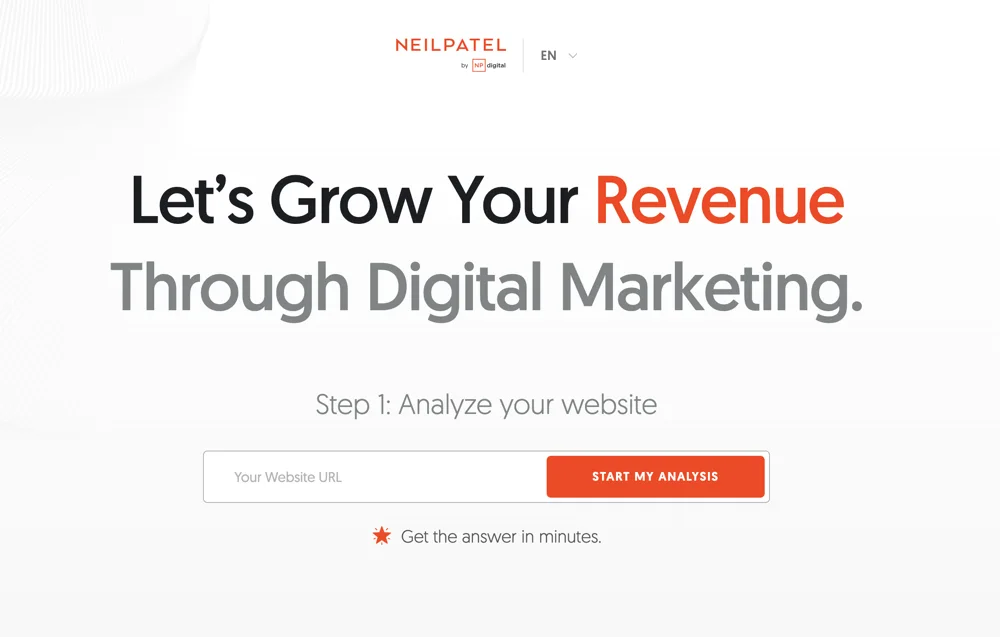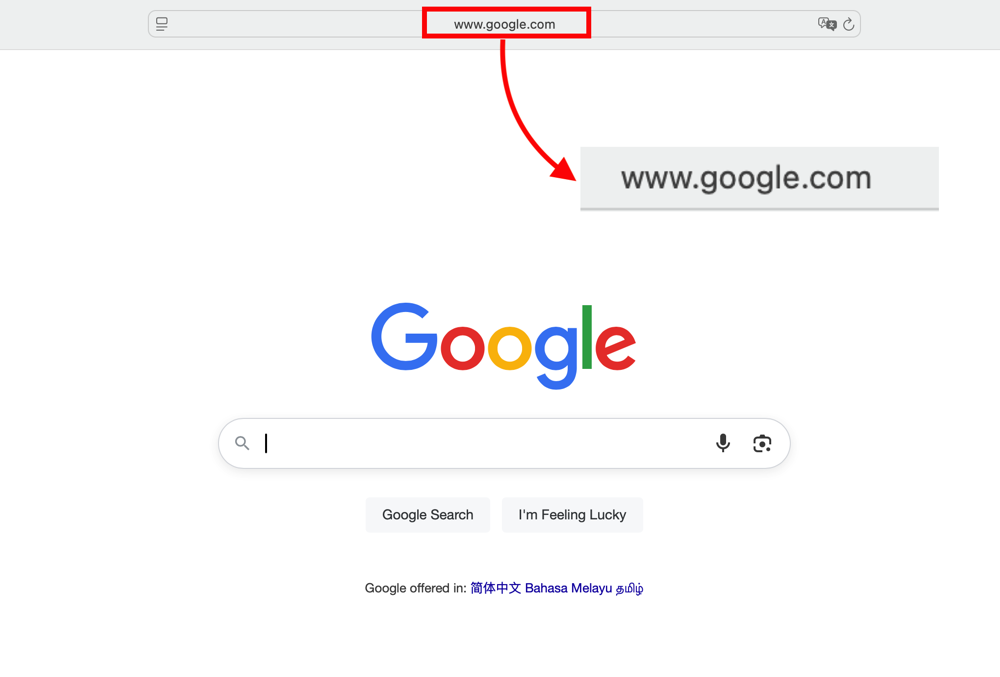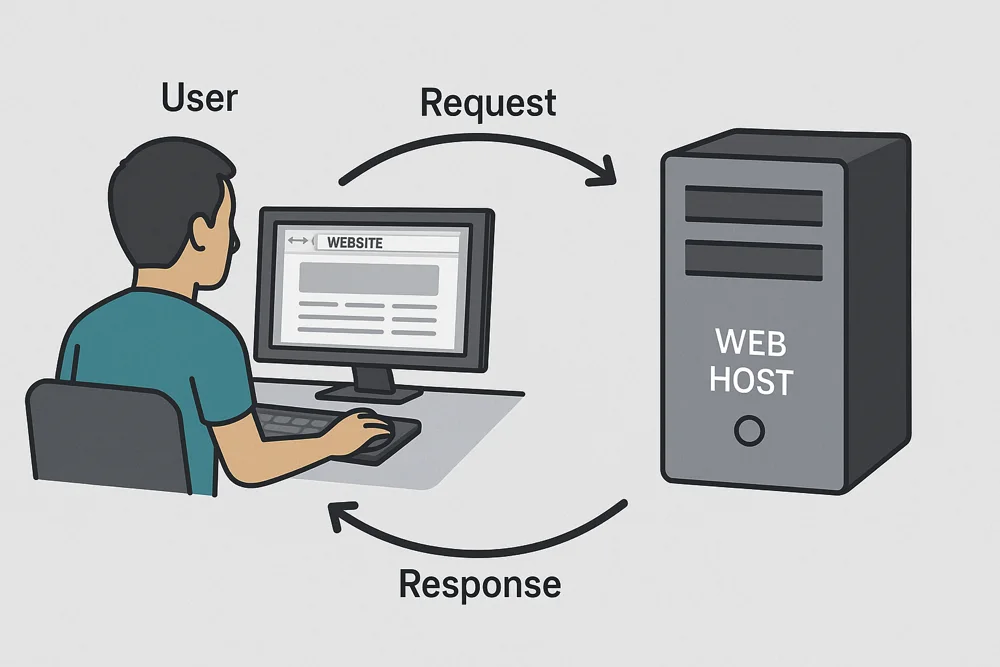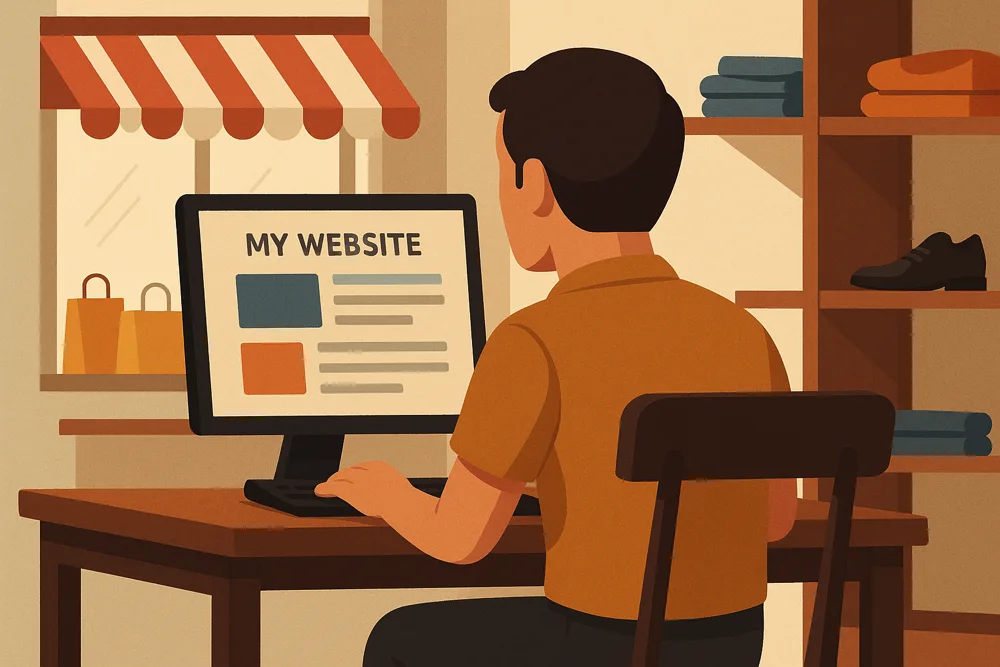You can create a website before you finish your morning coffee. No joke.
With today’s AI tools, you can build your own website fast, even if you’ve never done it before.
Some platforms are perfect if you want to make a business website or create a blog website, while others make it easy to make a personal website, portfolio, or online store.
All you need is the right platform, a clear goal, and a simple plan. I’ll walk you through everything step by step so you can create your own website without stress.
Let’s get started.
Step 1: Know Your Goal

Before you even think about clicking “Create a Website,” grab your coffee and let’s talk about something most beginners skip… your goal.
Think of it like planning a trip. You wouldn’t just hop on a bus without knowing where it’s going, right? Same with building a website.
If you don’t know what you want it to do, you’ll end up with something that looks nice but doesn’t actually work for you.
When I started ThinkMJ, I wasn’t dreaming about fancy animations or crazy effects. My goal was simple. Share what I know, help people make smarter choices online, and keep it clean and easy to read. That one decision shaped everything about my site.
Look at Neil Patel’s homepage. The second you land there, you know exactly what he’s offering. No guess work. That’s the power of a clear goal.

Your goal could be:
- Selling products, whether it’s handmade candles or a digital course.
- Sharing your business info so customers know when, where, and how to reach you.
- Offering memberships or courses.
- Building a community where people can connect and share ideas.
- Growing your personal brand by telling your story and showing your expertise.
- Showcasing your portfolio to land clients.
- Starting a blog to share tips, guides, or your thoughts.
And here’s a little secret, you can totally mix goals. Neil Patel does. He sells services and runs a blog to pull in readers and build trust.
Once you’ve nailed your goal, every other step gets easier. You’ll know what features you need, which platform fits you best, and what kind of design makes sense. Whether you want to create a website with AI, or use a traditional method, your goal will guide the way.
Here’s a quick cheat sheet:
| Goal | Website Type | Key Features |
| Sell products/services | eCommerce site | Product pages, cart, payments |
| Share business info | Business site | About page, contact form, map |
| Offer courses/memberships | Learning platform | Course pages, sign-up, payments |
| Build a community | Forum/membership site | Discussion boards, profiles, events |
| Personal branding | Personal site/portfolio | Bio, gallery, testimonials |
| Showcase skills | Portfolio site | Project gallery, contact form |
| Share knowledge | Blog/content hub | Blog posts, categories, email opt-in |
So before you rush to pick templates or colors, slow down. Set your destination first. Then we’ll pick the perfect ride to start a website and make it exactly what you need.
Step 2: Create Your Website
Think of a live website like a puzzle with three key pieces:
- A platform: this is your foundation.
- A domain name: your online address.
- Web hosting: your site’s home.
When all three fit together, you can create your website and have it ready for the world to see.
Let’s break it down.
2.1 Choose the Right Platform
If you want to create a website, your platform choice is huge. It’s like picking the foundation for your house.
Pick the wrong one, and you’ll be patching cracks later. Pick the right one, and everything just works.
When I built ThinkMJ, I went with WordPress. Why? Because it’s flexible. I could start a website as a blog and later expand into tutorials, tools, or even an online store – all without starting over.
Now, if I were running a clothing brand, I might choose Shopify instead. It’s built for selling online right out of the box, with inventory, payments, and shipping ready to go.
Here’s another example. Let’s say you run a pet clinic. You want clients to book appointments, read your pet-care blog, and contact you easily. WordPress can handle all that in one place without breaking a sweat.
The point is, every platform has its own strengths. Some are great at one job. Others, like WordPress, can wear many hats. Your goal decides your platform, whether you want to make a business website, make a personal website, or create a blog website.
Here’s a quick guide:
| Platform | Best For | Why Use It |
| Wix | Small business sites, portfolios, blogs | Easy drag-and-drop builder, beginner-friendly |
| Squarespace | Creatives, designers, photographers | Gorgeous templates, simple setup |
| WordPress | Blogs, business sites, eCommerce, portfolios | Highly customizable, works for almost anything |
| Shopify | Online stores | Built-in inventory, payments, shipping |
| Hostinger Website Builder | Beginners wanting quick setup | AI-powered builder, hosting included |
| Joomla | Advanced business sites, communities | Flexible, but needs some technical skill |
I’ve tested almost all of them, and honestly, WordPress is the best way to create a website if you want flexibility and long term growth.
It powers over 43% of all websites – from small personal blogs to huge corporate portals.
That’s why for the rest of this guide, we’ll stick with WordPress.
2.2 Domain Name
Your domain name is like your home address online. Without it, nobody knows where to find you.
When someone types thinkmj.com or google.com, it’s like they’re knocking on your door.

A domain has three parts:
- https: shows the site is secure (the “s” stands for secure).
- thinkmj: your unique name. Keep it short and memorable.
- .com: the extension. Popular ones are .com, .net, .org, .store, and .ai. Your choice can hint at what your site does. For example, yourname.store instantly says “I sell products.”
How to register a domain:
You can buy a domain from a registrar, a company that sells domain names. Now most popular registrars also perform as web hosts and vice versa.
- Most cost between $10 – $20/year.
- Many web hosts now offer the first year free.
- Even if you’re not ready to create your own website today, it’s smart to grab your name before someone else does.
Good registrars: Namecheap, Domain.com, Hostinger, Hover, Cloudflare.
Pro tip: Match your domain name to your business name. It’s easier for people to remember and for you to brand.
2.3 Choose a Web Host

If your domain is your address, your web host is your house. This is where all your site’s files, images, and code live.
Without hosting, your domain is just an empty lot.
Now, technically, you could host your site on your personal computer, but that means leaving it on 24/7, securing it, and doing all the tech maintenance yourself.
Unless you enjoy constant troubleshooting, trust me, it’s not worth it.
Instead, use a hosting company. They rent you space on their servers, keep your site online, and handle the heavy lifting behind the scenes.
Here’s what to look for:
- Reliability: At least 99.9% uptime so your site is always available.
- Speed: Choose servers close to your audience.
- Scalability: Room to grow as traffic increases.
- Security: SSL certificates, malware protection, backups.
- Value: Compare features, storage, bandwidth, and support, not just price.
Hosting Providers I Recommend
I’ve tried quite a few over the years, but these are the ones I recommend for their speed, reliability, and value for money.
Hostinger
One of the most affordable and beginner-friendly options. You can host your site, register your domain, and even use their AI Website Builder to create a website fast without coding.
- Main features: Fast hosting, free SSL, AI site builder, 24/7 support, 99.9% uptime.
- Pricing: Starts at $2.99/month.
- Best for: Small businesses, eCommerce stores, blogs, portfolios, and anyone who wants to make a website quickly with minimal setup.
SiteGround
Known for excellent customer support and top-notch performance. Their managed WordPress hosting means they handle updates, security, and speed tweaks for you.
- Main features: Free SSL, daily backups, advanced caching, managed WordPress services.
- Pricing: Starts at $3.99/month.
- Best for: Bloggers, small businesses, and anyone serious about speed and support.
Cloudways
A managed cloud hosting provider. You get the speed and scalability of cloud servers without needing to manage them yourself.
- Main features: Choose from providers like DigitalOcean or AWS, pay-as-you-go pricing, free SSL, managed security, staging environments.
- Pricing: Starts at $14/month (pay only for what you use).
- Best for: Growing businesses, eCommerce sites, or anyone who wants power and flexibility without server headaches.
ZipWP
Not just hosting, this is a WordPress AI website builder that can create a website using AI in under a minute. They’ve also added managed WordPress hosting, so you can build, host, and launch all in one place.
- Main features: AI-powered site creation in 60 seconds, managed WordPress hosting, free SSL, mobile-optimized designs, built-in SEO setup, one-click customization.
- Pricing: Free plan for site creation, premium from $19/month, hosting from $4.95/month.
- Best for: Anyone who wants to create a WordPress site fast without touching code – freelancers, small business owners, bloggers, and agencies.
I use all four for different purposes but for this tutorial, I’ll use Hostinger. It’s budget-friendly, quick to set up, and perfect for beginners learning the best way to make a website.
Next, let’s actually create a WordPress site and start bringing it to life.
Step 3: Set Up Your Site
Alright, you’ve got your domain and hosting sorted. Now it’s time to actually create your website and get it live.
Most hosting companies make this pretty effortless these days.
In fact, Hostinger (the one we’ll use here) starts the process right after you buy a plan. But I’ll walk you through it from their admin panel so you know exactly what’s happening.
Creating a Website with Hostinger
Hostinger is mainly a web host, so when you log in, their dashboard might look a bit busy at first. Don’t worry, everything’s organized.
On the left, click Websites. Then, in the right panel, hit the + Add Website button.
You’ll see four ways to make a website. Choose WordPress.
Quick note: If you’re curious about Hostinger Horizons or Hostinger Website Builder, I’ve covered them in a separate guide.
Once you pick WordPress, a setup wizard will appear.
1- Set Your Login Details
At Hostinger, setting up a website begins with:
- Choosing your site’s language
- Adding an email for the admin account
- And, creating a strong password
Keep this info safe as you’ll need it to log into your WordPress dashboard later. Click Next when you’re ready.
2- Pick How You Want to Build
Hostinger gives you two choices:
- Create a website with AI
- Pre-built websites with themes
I recommend going with the pre-built templates option. You’ll get access to the Astra theme and its Starter Templates library. It’s packed with designs for blogs, businesses, online stores, and more.
Free templates are solid and work great with Astra’s free version. Premium ones need Astra Pro for extra customization options.
Want to try something different? Hit Use a theme instead to explore other popular theme choices like GeneratePress, Hestia, or Blocksy.
Pro tip: Hostinger’s AI option is still pretty basic. It creates a simple website you’ll need to customize further, unlike their dedicated AI Website Builder, which is more advanced.
3- Preview Your Site
Before locking in your choice, you can preview how the site looks on desktop, tablet, and mobile. All Hostinger themes are responsive, so they’ll work nicely on any screen.
Not happy? Just click Back and try another template or theme.
4- Choose Plugins
Hostinger lets you install a few popular plugins right away, like:
- All in One SEO (AIOSEO) for search optimization
- WPForms for contact forms
- Akismet for spam protection
Pick what you need, or skip them for now with Do not install plugins. You can always add plugins later from the WordPress repository.
5- Connect Your Domain
If you’ve already bought your domain, add it here. If not, choose the temporary domain option and connect your own later.
Click Finish Setup and let Hostinger do its thing. This usually takes just a few seconds.
6- Personalize Your Site
Hostinger will take you straight to your homepage in editing mode. Click on any text to change it, just like editing a document. When you’re happy with your changes, hit Finish Setup at the top.
Now you’re inside your WordPress admin area, where Hostinger’s onboarding page will guide you through the basics. You’ll also see some handy tools and plugins they’ve added, like:
- Hostinger AI for content ideas
- LiteSpeed Cache for faster load times
- Spectra for extra design blocks
- Starter Templates for accessing a huge template library
- SureForms for forms and lead capture
From here, hover over the little home icon at the top left and click Visit Site.
Congratulations, your site is live (even if it’s just a temporary domain for now). You’ll see essential pages and placeholder text ready for you to customize.
I like Hostinger because it’s simple for beginners, but I’m also a big fan of ZipWP. Its AI-powered builder can spin up a fully functional WordPress site in under a minute, which is a game-changer if you want to create your own website fast without touching code.
Whether you stick with Hostinger or explore ZipWP, the key now is to start adding your own content, customizing the look, and making the site truly yours. The best way to create a website is to keep it authentic to your brand and purpose.
